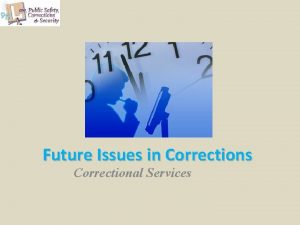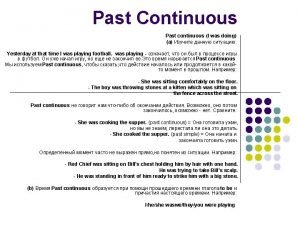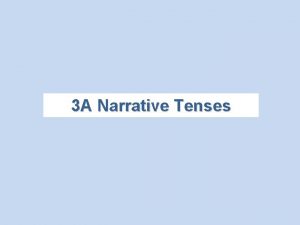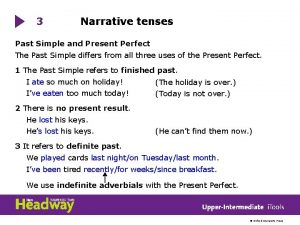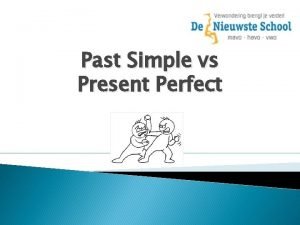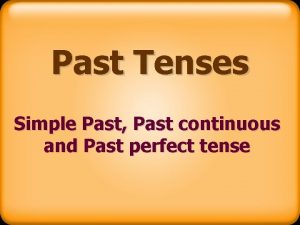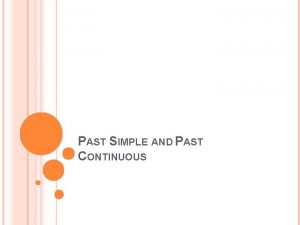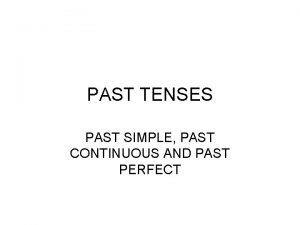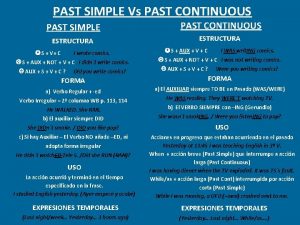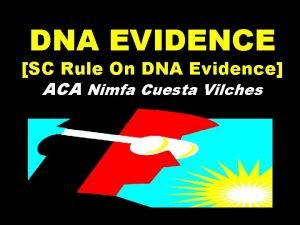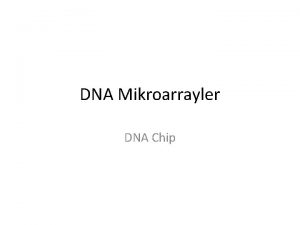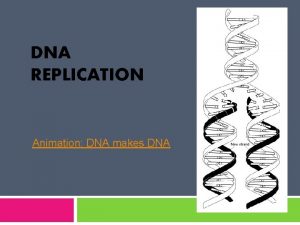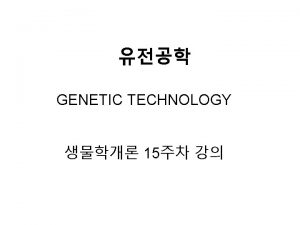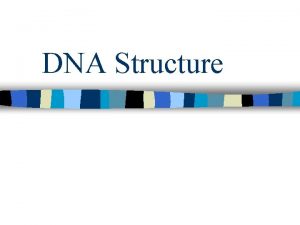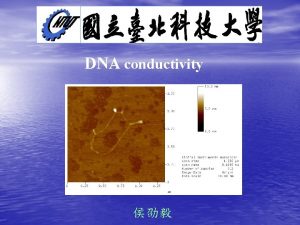Issues with DNA Evidence Past and Future Washington




































- Slides: 36

Issues with DNA Evidence, Past and Future Washington County Bar Association March, 2016 Washington, PA Mark W Perlin, Ph. D, MD, Ph. D Cybergenetics, Pittsburgh, PA Cybergenetics © 2003 -2016

National Academy of Sciences "Strengthening Forensic Science: A Path Forward" (2009) • Human examination bias • Statistics & reporting • Underlying scientific basis Among existing forensic methods, only nuclear DNA analysis has been rigorously shown to have the capacity to consistently, and with a high degree of certainty, demonstrate a connection between an evidentiary sample and a specific individual or source.

DNA genotype A genetic locus has two DNA sentences, one from each parent. locus mother allele 1 2 3 4 5 6 7 8 9 10 ACGT repeated word father allele 1 2 3 4 5 6 7 8 9 101112 An allele is the number of repeated words. A genotype at a locus is a pair of alleles. 10, 12 Many alleles allow for many allele pairs. A person's genotype is relatively unique.

DNA match statistic Evidence item Lab Evidence data Infer Evidence genotype 10, 12 DNA from one person 10 11 12 Compare 1 Prob(coincidental match) Known genotype 10, 12

National Academy of Sciences "Strengthening Forensic Science: A Path Forward" (2009) • Human examination bias • Statistics & reporting • Underlying scientific basis However, . . . there may be problems. . . with how the DNA was. . . interpreted, such as when there are mixed samples

DNA match statistic Evidence item Lab Evidence Separate data Contributor genotype 10, 11 @ 20% 11, 11 @ 30% 11, 12 @ 50% DNA from two people 10 11 12 Compare Prob(evidence match) Prob(coincidental match) Known genotype 11, 12

Pennsylvania v Ralph Skundrich On July 25, 2002, a Pittsburgh college student, 18, was threatened with a gun and sexually assaulted in her Shadyside apartment. The victim's jeans and T-shirt contained biological evidence. The Allegheny County crime lab developed DNA data from the two evidence items. Skundrich was identified as a suspect after a DNA match was made in the national database in 2009.

DNA mixture evidence (jeans) Quantitative peak heights at locus D 13 S 317 peak size peak height

True. Allele® Casework View. Station User Client Visual User Interface VUIer™ Software Database Server Interpret/Match Expansion Parallel Processing Computers

How the computer thinks Consider every possible genotype solution First person's allele pair Explain the peak pattern Better explanation has a higher likelihood 90% Second person's allele pair 10%

DNA match information How much more does the suspect match the evidence than a random person? 35 x 98% Prob(evidence match) Prob(coincidental match) 3%

DNA locus Match information at 13 loci Likelihood ratio (LR)

Is the suspect in the evidence? A match between the jeans and Ralph Skundrich is: 2. 1 quadrillion times more probable than coincidence A match between the T-shirt and Ralph Skundrich is: 4. 04 quadrillion times more probable than coincidence

Crime lab data summary Over threshold, peaks are labeled as allele events All-or-none allele peaks, each given equal status Threshold Allele Pair 8, 8 8, 11 8, 12 8, 14 11, 11 11, 12 11, 14 12, 12 10%12, 14 14, 14

DNA locus Match statistic comparison Likelihood ratio (LR)

Information comparison Jeans T-shirt Combined PI 280 thousand (5) 630 thousand (5) True. Allele 2 quadrillion (15) 4 quadrillion (15) Method

Reliability (PA Rule 702) Testimony by Expert Witness A witness who is qualified as an expert by knowledge, skill, experience, training, or education may testify in the form of an opinion or otherwise if: (a) the expert’s scientific, technical, or other specialized knowledge is beyond that possessed by the average layperson; (b) the expert’s scientific, technical, or other specialized knowledge will help the trier of fact to understand the evidence or to determine a fact in issue; and (c) the expert’s methodology is generally accepted in the relevant field.

Validation axes Sensitivity. The extent to which interpretation identifies the correct person. Truly include, don't falsely exclude. Specificity. The extent to which interpretation does not misidentify the wrong person. Truly exclude, don't falsely include. Reproducibility. The extent to which interpretation gives the same answer to the same question. Concordant independent computer runs.

True. Allele validation papers Perlin MW, Sinelnikov A. An information gap in DNA evidence interpretation. PLo. S ONE. 2009; 4(12): e 8327. Ballantyne J, Hanson EK, Perlin MW. DNA mixture genotyping by probabilistic computer interpretation of binomially-sampled laser captured cell populations: Combining quantitative data for greater identification information. Science & Justice. 2013; 53(2): 103 -14. Perlin MW, Hornyak J, Sugimoto G, Miller K. True. Allele® genotype identification on DNA mixtures containing up to five unknown contributors. Journal of Forensic Sciences. 2015; on-line. Greenspoon SA, Schiermeier-Wood L, Jenkins BC. Establishing the limits of True. Allele® Casework: a validation study. Journal of Forensic Sciences. 2015; in press. Perlin MW, Legler MM, Spencer CE, Smith JL, Allan WP, Belrose JL, Duceman BW. Validating True. Allele® DNA mixture interpretation. Journal of Forensic Sciences. 2011; 56(6): 1430 -47. Perlin MW, Belrose JL, Duceman BW. New York State True. Allele® Casework validation study. Journal of Forensic Sciences. 2013; 58(6): 1458 -66. Perlin MW, Dormer K, Hornyak J, Schiermeier-Wood L, Greenspoon S. True. Allele® Casework on Virginia DNA mixture evidence: computer and manual interpretation in 72 reported criminal cases. PLOS ONE. 2014; (9)3: e 92837.

WTC DNA data reanalysis 18, 000 victim remains 2, 700 missing people match

Widespread acceptance Admitted after Frye or Daubert challenge in: California, Louisiana, New York, Ohio, Pennsylvania, South Carolina, Virginia, Australia & United Kingdom Crime labs use True. Allele® system in California, Maryland, South Carolina & Virginia Used in five hundred criminal cases in most of the United States, for both prosecution and defense Seventy five criminal cases in Pennsylvania Adams, Allegheny, Beaver, Berks, Butler, Cambria, Columbia, Delaware, Indiana, Luzerne, Lycoming, Mercer, Mifflin, Pike, Washington, Westmoreland, York

Pennsylvania appellate court • • •

Relevance (PA Rule 403) Excluding relevant evidence for prejudice, confusion, waste of time, or other reasons probative force unfair prejudice The court may exclude relevant evidence if its probative value is outweighed by a danger of one or more of the following: • unfair prejudice, • confusing the issues, • misleading the jury, • undue delay, • wasting time, or • needlessly presenting cumulative evidence.

Commonwealth v Booher DNA excluded as misleading, confusing & prejudicial

DNA statistic shuts down labs “National accreditation board suspends all DNA testing at D. C. crime lab” The Washington Post April 27, 2015 Did not comply with FBI standards “New protocol leads to reviews of ‘mixed DNA’ evidence” The Texas Tribune September 12, 2015 24, 468 lab tests affected

MIX 05: NIST mixture interpretation interlaboratory study. Butler JM, Kline MC, National Institute of Standards and Technology Promega's Sixteenth International Symposium on Human Identification, 2005 MIX 05: Statistics not reproducible National Institute of Standards and Technology Two Contributor Mixture Data, Known Victim 213 trillion (14) 31 thousand (4)

MIX 13: An interlaboratory study on the present state of DNA mixture interpretation in the U. S. Coble M, National Institute of Standards and Technology 5 th Annual Prescription for Criminal Justice Forensics, Fordham University School of Law, 2014. MIX 13: Statistics falsely include

Process is not objective science (1) Choose, alter, discard, edit, and manipulate the DNA data signals (2) Compare defendant's genotype to edited data & decide if he is in the DNA evidence (3) If he is "included", then calculate a DNA mixture statistic • Human examination bias • Statistics & reporting • Underlying scientific basis

CPI lacks probative value Forensic crime laboratories have generated CPI statistics on hundreds of thousands of DNA mixture evidence items. However, this commonly used match statistic behaves like a random generator of inclusionary values, following the LLN rather than measuring identification information. A quantitative CPI number adds little meaningful information beyond the analyst’s initial qualitative assessment that a person’s DNA is included in a mixture. Statistical methods for reporting on DNA mixture evidence should be scientifically validated before they are relied upon by criminal justice.

Relevance of CPI Unvalidated DNA match statistic, unrelated to identification PA Rule 401 “evidence makes a fact more or less probable” PA Rule 403 “outweighed by a danger of: ” Probative value none Unfair prejudice Confusing the issues Misleading the jury Cumulative evidence

Method comparison Capability Human review True. Allele Data choice Selection bias Use all data Uncertainty Threshold Statistical Neutral Include only Include/Exclude Statistic Counts tests Probative Objective No Yes Validated No Yes Accurate No Yes Frye challenge No Yes Item-to-item No Yes Database 10% 100%

Inconclusive mixture Crime laboratory DNA report Crime lab user fee: $5, 000 Conclusions: Item 1 – Swab of textured areas from a handgun The data indicates that DNA from four (4) or more contributors was obtained from the swab of the handgun. Due to the complexity of the data, no conclusions can be made regarding persons A and B as possible contributors to this mixture.

Computer reanalysis Cybergenetics True. Allele® report Match statistics provide information Unmix the mixture Contributor 1 2 3 4 400, 000 Person A excluded Person B included

44 cases, 8 trials, 3 DNA exonerations True. Allele in Allegheny County Crime Evidence Defendant Outcome Sentence rape clothing Ralph Skundrich guilty 75 years murder gun, hat Leland Davis guilty 23 years rape clothing Akaninyene Akan guilty 32 years murder shotgun shells James Yeckel, Jr. guilty plea 25 years murder fingernail Anthony Morgan guilty weapons gun Thomas Doswell guilty plea bank robbery clothing Jesse Lumberger guilty drugs gun Derek Mc. Kissick guilty plea 2 1/2 years drugs gun Steve Morgan guilty plea 2 1/2 years murder door, clothing Calvin Kane guilty plea 20 years murder gun Jaykwaan Pinckney guilty plea 10 years child rape clothing Dhaque Jones guilty plea 6 years shooting gun Anthony Jefferson guilty plea 4 years weapons gun Delmingo Williams guilty plea 3 years incest rape clothing Terry L. guilty 40 years bank robbery hat Robert Schatzman guilty pending weapons gun Rashawn Walker guilty 1. 5 years robbery hat Lauren Peak guilty plea 1 year murder gun Chaz White guilty plea 4 years life 1 year 10 years

Post-conviction relief Title 42, Chapter 95, Subchapter B § 9543(a)(2). Eligibility for PCR (ii) Ineffective assistance of counsel (vi) The unavailability … of exculpatory evidence that has subsequently become available and would have changed the outcome … § 9543. 1. Post-conviction DNA testing True. Allele reanalysis of “inconclusive” DNA or inaccurate DNA match statistics Han Tak Lee v. Monroe County (PA Innocence) US Court of Appeals for the Third Circuit (2012) “fire expert testimony at trial fundamentally unreliable, so entitled to federal habeas relief on due process claim”

More DNA information http: //www. cybgen. com/information • Courses • Newsletters • Newsroom • Presentations • Publications • Webinars http: //www. youtube. com/user/True. Allele You. Tube channel perlin@cybgen. com
 Future continuous and future perfect difference
Future continuous and future perfect difference Future perfect future continuous future perfect continuous
Future perfect future continuous future perfect continuous Coding dna and non coding dna
Coding dna and non coding dna Past simple a continuous
Past simple a continuous Write a story using past simple and past continuous
Write a story using past simple and past continuous Difference between physical and testimonial evidence
Difference between physical and testimonial evidence Current and future issues in corrections
Current and future issues in corrections Dna polymerase function in dna replication
Dna polymerase function in dna replication Bioflix activity dna replication lagging strand synthesis
Bioflix activity dna replication lagging strand synthesis The principal enzyme involved in dna replication is
The principal enzyme involved in dna replication is Dna and genes chapter 11
Dna and genes chapter 11 Past simple past continuous past perfect timeline
Past simple past continuous past perfect timeline Past simple past continuous past perfect
Past simple past continuous past perfect What is primary sources
What is primary sources Primary evidence vs secondary evidence
Primary evidence vs secondary evidence Secondary sources
Secondary sources Primary evidence vs secondary evidence
Primary evidence vs secondary evidence Jobs vancouver
Jobs vancouver Why are fibers considered class evidence
Why are fibers considered class evidence Class vs individual evidence
Class vs individual evidence Class vs individual evidence
Class vs individual evidence The ecological fallacy
The ecological fallacy Future continuous.
Future continuous. Perfect infinitive
Perfect infinitive Future plans and finished future actions
Future plans and finished future actions Future perfect and future continuous
Future perfect and future continuous 1 2 3 kondicional u engleskom jeziku
1 2 3 kondicional u engleskom jeziku Past progressive perfect
Past progressive perfect Participle 2 таблица
Participle 2 таблица 3a grammar narrative tenses answers
3a grammar narrative tenses answers Past simple i past continuous
Past simple i past continuous Narrative tenses past simple past perfect past continuous
Narrative tenses past simple past perfect past continuous Past perfect simple and continuous examples
Past perfect simple and continuous examples Future perfect interrogative
Future perfect interrogative Present tense to past tense
Present tense to past tense Future nurse future midwife
Future nurse future midwife Present continuous or future continuous
Present continuous or future continuous






